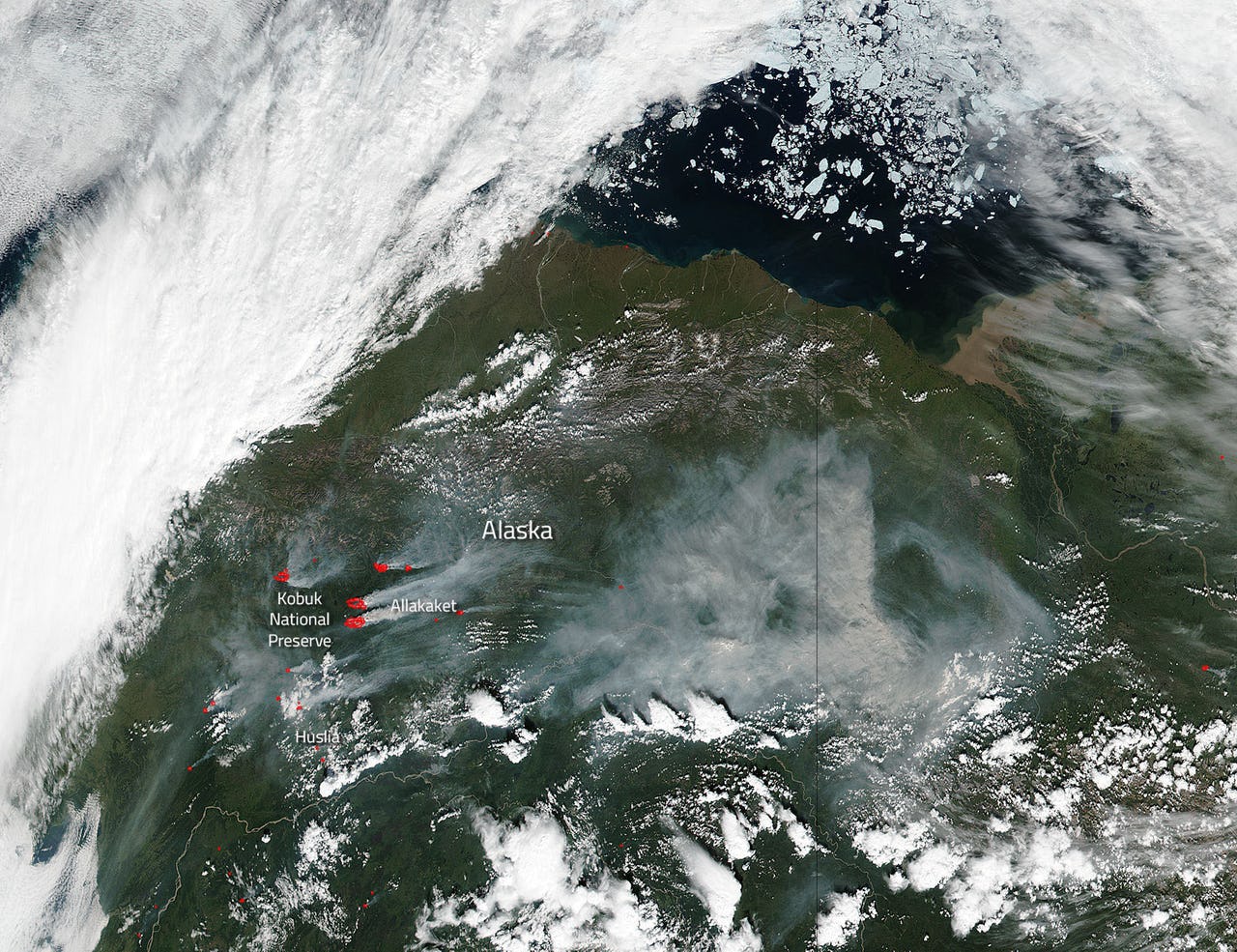Arctic Wildfires May Add to Global Warming

Alatna Wildfire Complex in Alaska 2016. Photo: NASA
An exceptional wildfire near Bettles, Alaska in 2007 released as much carbon dioxide into the atmosphere as the entire Arctic tundra absorbs in a year according to a report in the journal Nature.
The Anaktuvuk River fire lasted for more than three months and burned across more than 1,000 sq km in central Alaska. It more than doubled the amount of Alaskan tundra visited by fire since the 1950s. Fires in the tundra used to be an infrequent occurrence as the ground is covered by snow and ice for much of the year. Over the past two decades, however, tundra fires have become more common as average temperatures in the Arctic have risen and sea ice has receded. And according to scientists, there has been a marked uptick in lightning activity on the North Slope in the last two decades.
According to Michelle Mack, the leading researcher on the Nature paper, most tundra fires remain rather small in size due to wet soil and patches of snow. As warmer and drier climate patterns prevail, Arctic fires could become a new climate feedback, not only releasing carbon dioxide into the atmosphere but also sawing the permafrost and thus releasing the vast quantities of methane contained in the soil.
The year 2007 saw unusually warm and dry conditions across the Arctic, resulting in a dramatic loss of sea ice. The town of Bettles, about 140 km south of the blaze, recorded the highest mean temperature since record keeping started in 1951. For July and August 2007 mean temperature about 2.4°C above above the historic average of 15.8°C. At the same time, the early spring months saw record low snow and rainfall.
Climate models are yet unsure if increased fire activity in the northern latitudes will lead to a net loss or gain of carbon in the atmosphere. Warmer temperatures may not only lead to more fires, but plant life could flourish and sequester more carbon from the atmosphere. More plant life or burned soil, however, may reduce the albedo of the Arctic. Normally, light-colored tundra reflects heat back into space. All of this adds up to a scenario in which the Arctic tundra becomes a source of carbon dioxide, instead of a sink.